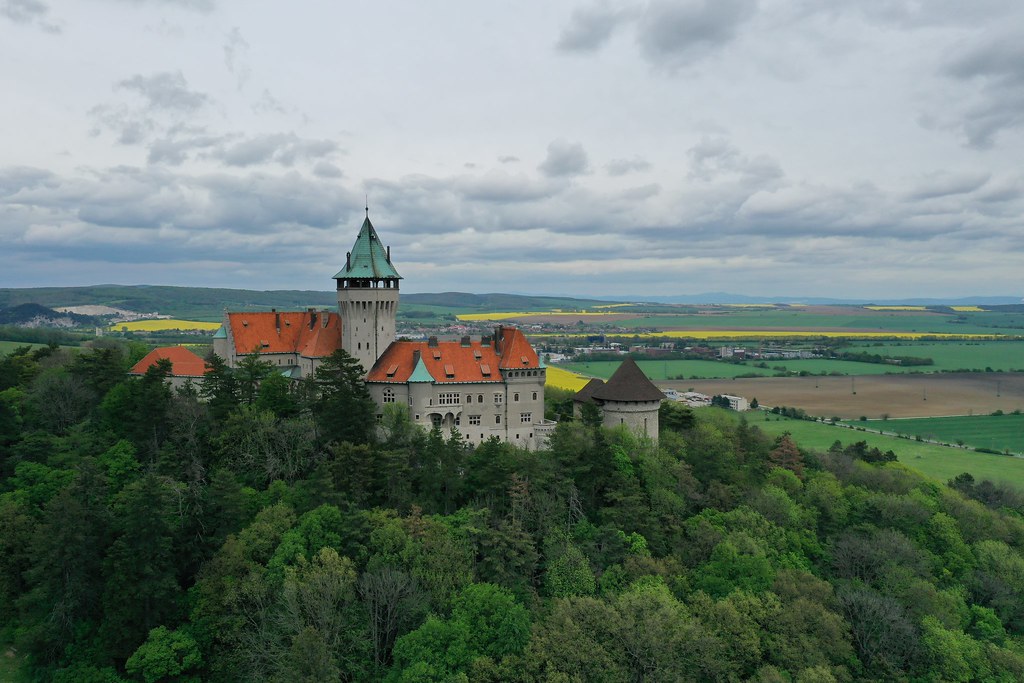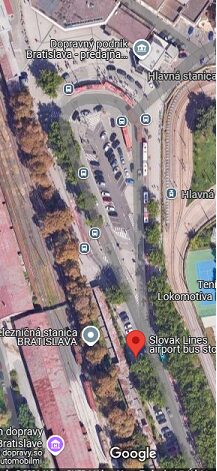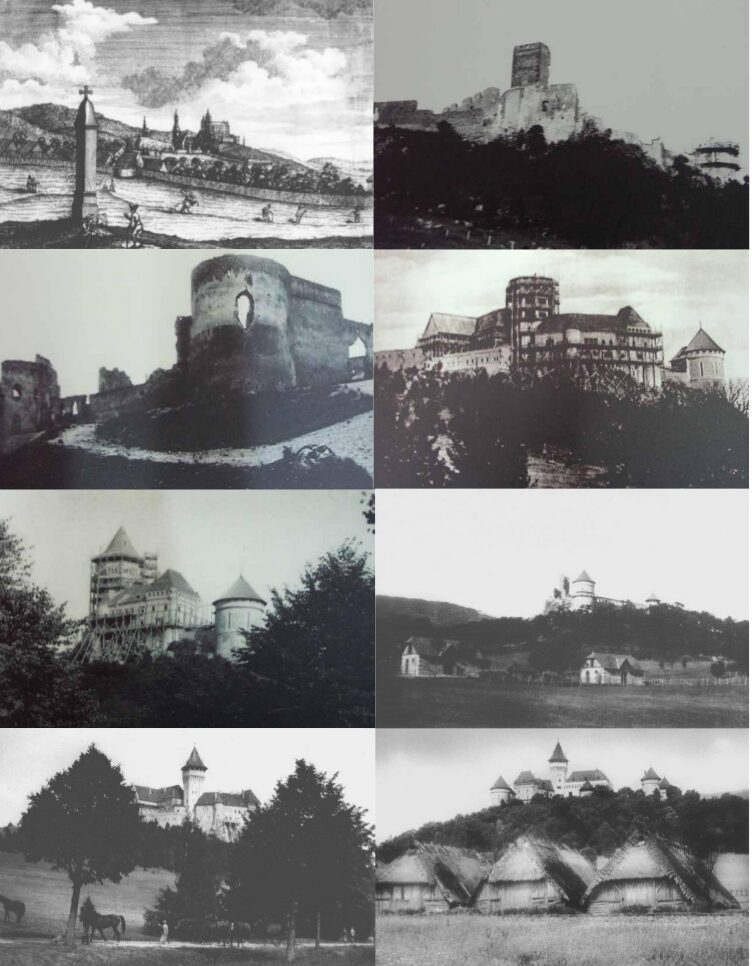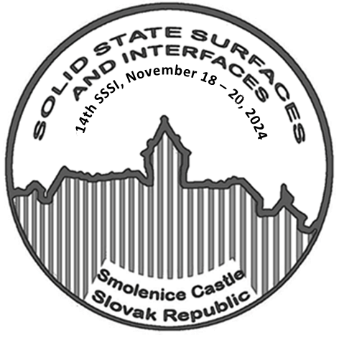Accommodation

The conference will take place in the Congress Centre of the Slovak Academy of Sciences, Smolenice Castle. The castle is located in Small Carpathian Mountain some 50 km from Bratislava, the capital of Slovak Republic. Beautiful countryside around the castle offers several possibilities for walking trips (to Driny Caveor to the archeological site Molpir) or you may visit the castle Červený Kameň (some 15 km from Smolenice). The scientific meetings take place in a large lecture hall (over 100 seats) equipped with standard presentation equipment (data projector, PC). A terrace and several lounges provide comfortable place for informal meetings and discussions during the days and evenings. You may find more information about the venue at the official website of the Congress Centre SAS Smolenice and the visual presentation of the Castle.
The accommodation is arranged at the conference venue in the beautiful Smolenice Castle.
Conference bus transport:
18. November 2024 Bratislava (Central Railway Station) – Smolenice
• Bratislava (Central Railway Station), departure at 8:20 a.m. (red point = bus stop)
Link bus stop: https://maps.app.goo.gl/9H2odoSqRAPCpCRm7

20. November 2024 Smolenice – Bratislava (Central Railway Station)
• Smolenice, departure at 13:00 /expected arrival to Bratislava 15:00/
History of Smolenice Castle
THE OWNERS OF THE CASTLE
Smolenice Castle was not originally inhabited by landowners. In the 15th century it belonged to the king. The army was housed in it, and it fulfilled the role of a training castle. At the beginning of the 16th century, the Országh family became the owners of Smolenice, although it is not assumed that they lived here, because they had a well-equipped residence in Pezinok. The inner life of the castle began to develop only under the Erdődys, who became masters of the smolenice at the end of the 16th century. The Erdődys rebuilt the castle (in particular, they added floors above the inner main building). The first of them, Tomáš Erdődy, lived here with his wife Anna Mária Ungnádová, who also died here. His son Kristof also stayed here most of the time. Gabriel Erdődy and his mistress Mária Pállffyová lived here permanently, died here and are buried in the Smolenice church.
At the beginning of the 18th century, when František Rákoczi rose up against the emperor and wanted to win Hungary’s independence, Smolenický Castle became the scene of battles between the Kurucs and the imperial army. At the beginning of 1705, around 3,000 insurgents gathered near Smolenice, but General Heister dispersed them on January 7, 1705, before they could reach the castle. Despite this, Rákoczi’s insurgents kept Smolenice Castle under siege and cut it off from the town of Smolenice. The subject population sympathized with the rebels and supported them. In addition, a severe drought caused a shortage of water in the castle, so the Imperial soldiers were forced to use wine instead of water while the supply was sufficient. Finally, on July 10, 1705, the exhausted Castelli and Haslinger left Smolenický Castle together with the guard unit. The castle fell into the hands of Count Bercsényi, who occupied it with an observation detachment. The insurgents held Smolenický Castle for two whole years and left it only on July 7, 1707, when it was again occupied by a detachment of the imperial army.
SMOLENICE CASTLE IN THE PAST
In the second half of the 18th century, during the reign of the last Erdődys, Smolenice Castle began to fall into disrepair. Its last description comes from the 18th century, when it was no longer modified: The castle was surrounded by a wall in which there were four bastions and 3 cannons. The castle was entered through a gate that was oriented to the north. This gate was protected by two iron swing gates and a drawbridge, under which there was a deep moat. In the courtyard was a well 27 fathoms deep, carved in the rock. In 1948-50 it was cleaned and deepened to 60 m.
Stone steps led from this ground-floor courtyard to the castle courtyard garden. The armory was located here. All arches on the ground floor were secured with bars. Under the eastern side of the castle there were two large cellars where wine was stored. In this courtyard there were neat sheds and ice houses. Stone stairs led from the courtyard to the second floor.
In the bastion on the south side, there was a chapel of St. The cross, which was built by Tomáš Erdődy in 1596. The chapel contained a valuable altar with images of Mary Magdalene, the Virgin Mary and St. Tomas. Paintings with scenes of Christ’s torture hung on the walls. This chapel was equipped with the same inventory as the church, there was also an organ, but when the castle began to be abandoned towards the end of the 18th century, the main altar was transferred to Galanta and placed in the chapel of Count Ján Erdődy.
From the large marble-paved room, doors led to three rooms, to the east of which there were four rooms closed by a corner room. This part of the 4 rooms was occupied by the countess. Next to it were the rooms for the maids and behind them an arched corridor, which closed the floor. The rooms occupied by the countess had textured floors, while the servants’ rooms had wooden floors. The tiles were made of burnt brick everywhere.
On the third floor, on the east side, there was a large hall and a corner room. Then nine rooms with stucco followed one after the other, and the tenth room, facing south, ended the floor. This third floor was inhabited by counts, countesses, and other members of the count’s family. The furniture was remarkable and featured different colored covers, depending on who it served. The countess’s furniture was decorated in yellow, the count’s was black and lined with gold. The countess and the countess had four-poster beds in the bedroom in the corresponding color of the furniture. They had special prayer tables and writing cabinets by the beds. Artistic paintings hung on the walls. In the dining room there were paintings of the count’s ancestors and leather-covered chairs. In the great hall on the first floor, there were portraits of ancestors in golden frames. Large Turkish carpets and a large rectangular painting from the history of Poland complemented the wall decoration.
A pentagonal tower stood on the western side of the castle. It had three floors for grain storage, while gunpowder was stored in the fourth. Under the roof there were two bells that were rung in the morning, at lunch, in the evening, to church and before a storm. The main building was covered with burnt tiles, while the bastions and outbuildings were covered with shingles.
As early as 1706, after Juraj Erdődy’s death, a detailed inventory of the castle’s internal equipment and equipment was drawn up. Under the written inventory, Ján Jozef Koller, a Zeman from Smolenice, is signed as the representative of the Count’s family. The veracity of the written inventory is confirmed by the witnesses Ignác Birovszký, prefect, and Ján Novaky, administrator of the county property. Since the last Erdődys were heavily indebted to the Smolenice estate, this had an adverse effect on the maintenance of the castle. The decay was completed during the Napoleon Wars – the main castle building and the tower burnt down.
Reconstruction of the Smolenice Castle of today was started early in the 20th century by Jozef Pálffy Jr., the landlord of Smolenice and Dobrá Voda estates. First works of the fortification walls started in 1887. Bastions from the old castle were preserved including a height extension and a new roofing. The Count Pálffy rebuilt the castle at his own expense according to the design by the architect Jozef Hubert. During World War I, the reconstruction was interrupted; provisional adaptation of some rooms was made and the archives of the Pálffy family were located in them. The construction was not resumed before the end of World War II. In 1945 the castle became the property of the State; it was taken over by the Slovak National Council which decided to keep it as their summer-house. The castle was finished and furnished and handed over to the Slovak Academy of Sciences on 26th June 1953 to become a representative place for meetings of the scientists from the worldwide.

